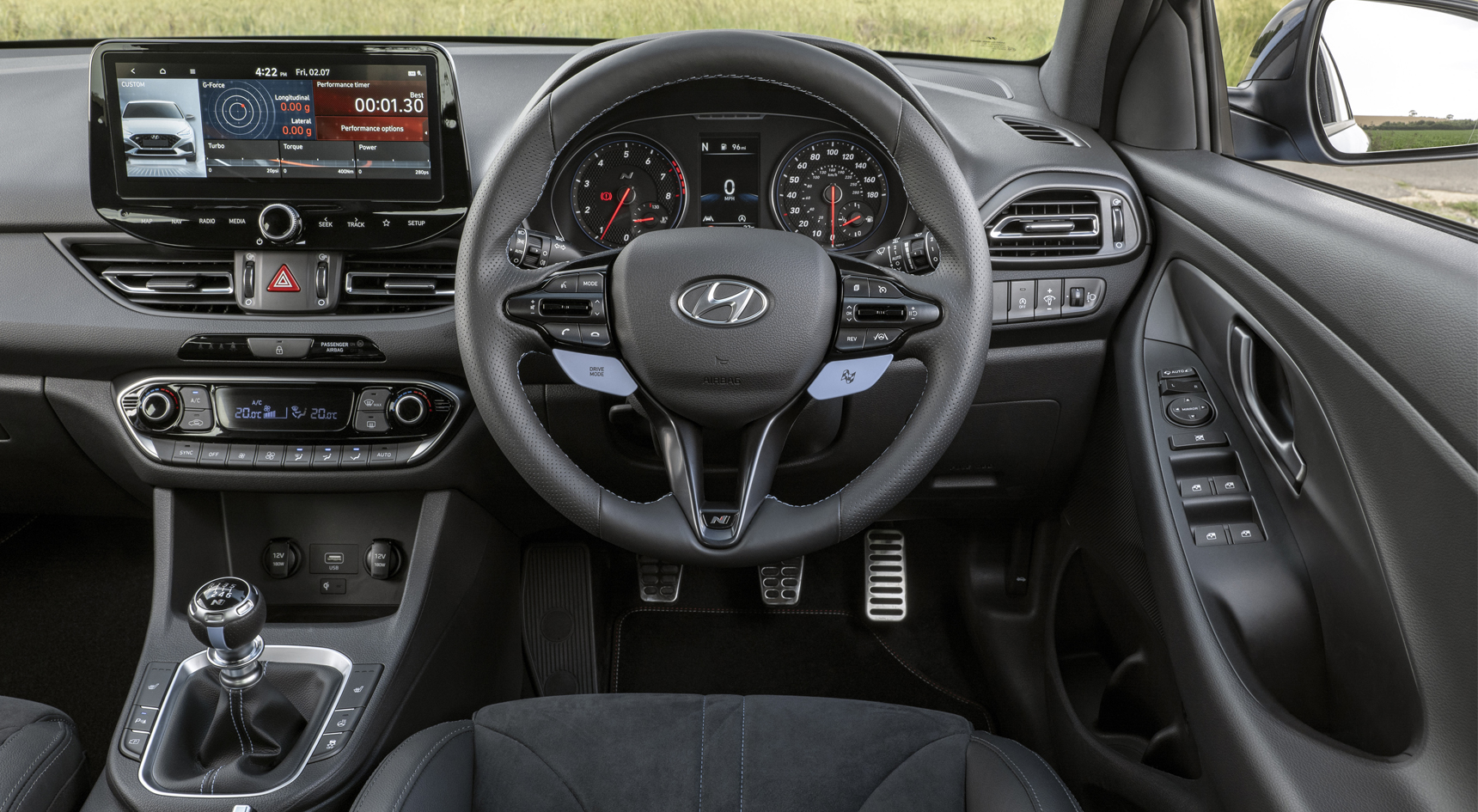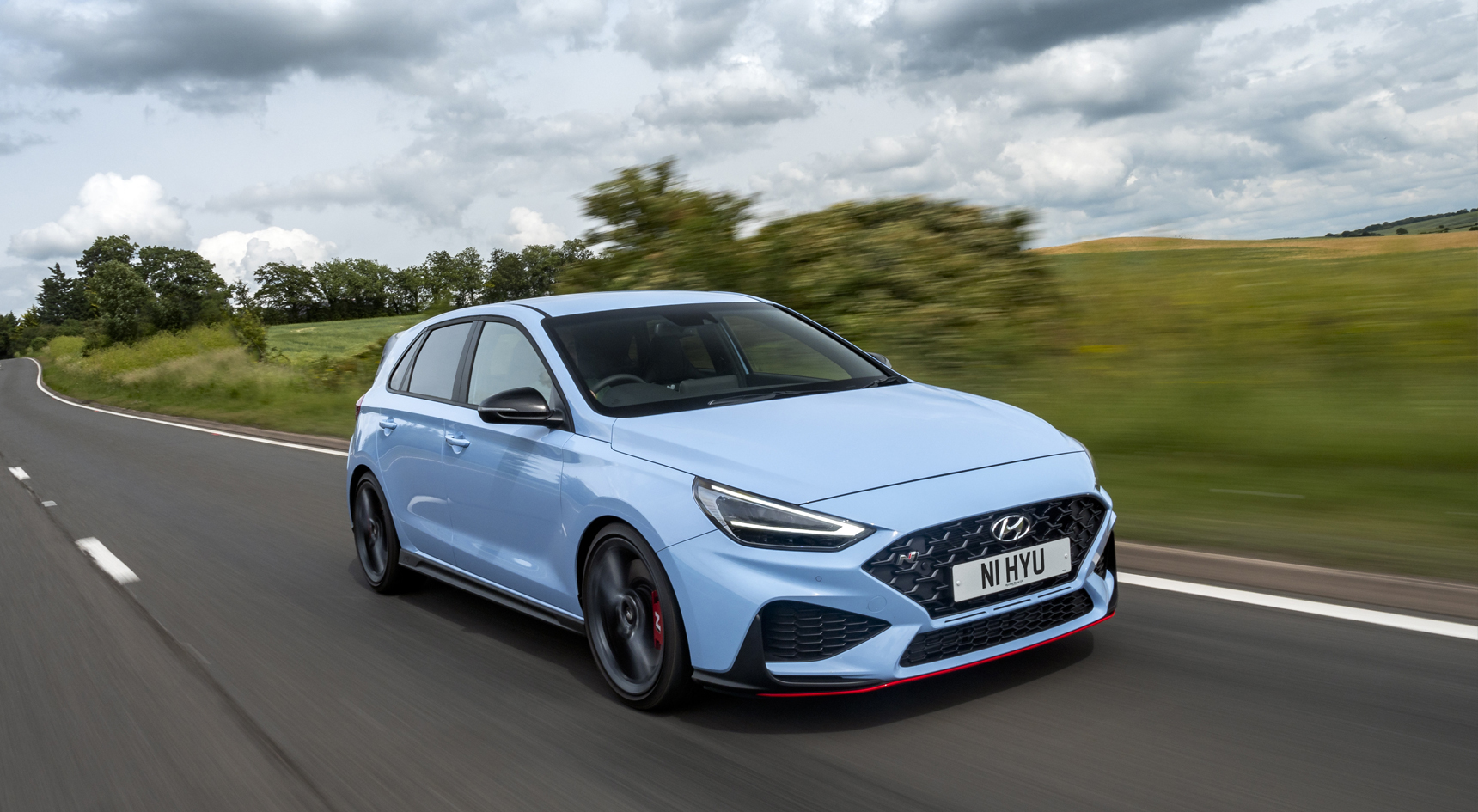New-car review: Hyundai i30N DCT

Hyundai has grown from a cheap and cheerful budget car brand to a serious mainstream company that has the fight up to more popular hatch makers.
It’s winning against the likes of the well-established VW GTi with the new, upgraded i30N. As all brands mature, they inevitably need a sports range to what would otherwise risk being a commodity brand, and Hyundai N models have done just this for Hyundai.
The N stands for Namyang, which is Hyundai’s global research and development centre in South Korea. The second N in the i30N’s life is for the Nürburgring Test Centre in Germany, where a lot of the testing and development was done.
| The specs | |
|---|---|
| Power | 206 kW at 6000 RPM |
| Torque | 395 Nm at 2100 to 4700 RPM |
| Price range | i30N: $44,500 6-speed manual i30N: $47,500 8-speed DCT |
| Fuel consumption | 8.5L per 100km |
| ANCAP | Not rated |
| Warranty | Seven years with unlimited kilometres |
Value for money
Hyundai has used the VW Golf GTi as the benchmark for what constitutes a hot hatchback, and the i30N have overtaken the Volkswagen in price, performance and packaging.
Hyundai’s factory warranty covers a limited range of track activities for the enthusiasts but doesn’t stretch to timed competition, rallying or racing. As you expect, the i30N uses the more expensive 95 RON. With a starting price of about $50,000, the i30N is the best value package on the market today.
Design and function
The i30N brings high-performance and practicality, giving it a weekday use beyond Sunday morning drives and fun on the track. Design-wise, hatches have a style recipe, and externally Hyundai has clearly targeted the VW Golf in its proportions and silhouette. Looks are one aspect that make a car attractive, but a solid body allows the suspension to deliver exceptional handling.
Hyundai has achieved this with bracing in the rear cargo area, which stiffens the body to deliver better control. However, it does interrupt the floor space in the cargo area and makes the boot less practical. But when the designers of hot hatches have a choice between handling and practicality, practicality will always come in second place.

On the road
The chassis development of the new i30N was honed on the Nürburgring in Germany, and because of the respect Hyundai has for Australian engineers, they were asked to be involved in the global development.
Hyundai fitted forged alloy rims to the i30N, removing 14kg from the combined weight of the 19-inch wheels, which also helped in developing the suspension. The dial-up suspension has three modes from ‘Normal’ through to the brutal and extremely stiff ride in ‘N-Race’ mode.
Like other car manufacturers, Hyundai has used clever electronics to assist in the delivery of power to the ground via the front wheels. The gaudily named ‘N Corner Carving Differential’ (which is essentially an electronic-limited slip differential) manages power transfer through the corners and launch control when the power is needed instantly off the mark and in a straight line.
There are two transmission options – a six-speed manual or the new eight-speed dual-clutch transmission (DCT). The latter also has ‘N Grin Shift’ which is activated via a button on the steering wheel and gives you a 7Kw temporary boost for overtaking on track days.

The i30N, with its 2L turbo engine, is quicker than the VW Golf GTi in both transmission configuration and the DCT version.
It also has a “love it or hate it” variable exhaust valve system, which delivers the N’s distinctive popping and banging on gear changes and throttle off. Coupled with the tyre noise from the 19-inch Michelin tyres, it’s noisy in the i30N cabin.
Underpinning its track-day design, the N’s dash provides information needed for high-performance circuit driving, such as oil and coolant temperatures, and torque and turbo pressure. While it’s tricky to keep an eye on these levels in most cars, the i30N’s design makes this information easily visible for the driver.
In addition, a lap timer and high-performance dedicated infotainment function measure the time it takes to drive a lap on a racetrack. The ‘N Track Map’ records the driver’s location and movement on the circuit in real-time.
This allows the driver to record their times without needing additional specialised equipment and helps them analyse and improve their performance.
Summary
The Hyundai i30N has become the go-to car for value and performance on the hot hatch market. It offers the enthusiast a practical alternative to the two-door sports cars. It’s capable of performing on the track but can be tuned back for comfortable every-day driving.

